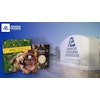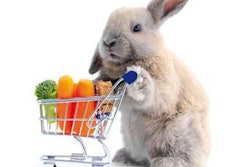The International Pet Industry Summit (IPIS), held in late August in Shanghai, China, as part of Pet Fair Asia, focused this year on pet product ecommerce. Like China's pet care industry overall, this sector seems to be small but growing quickly, especially when compared to the rest of the world.
China's pet care sales will contribute just over US$1 billion to the projected global total of US$96 billion this year, according to Clarissa Nicklaus, senior research analyst with Euromonitor and a speaker during Petfood Forum China, held two days after IPIS. Unlike with global pet care sales, of which petfood accounts for 77%, pet products dominate in China, with petfood comprising only 37% of all pet care sales.
Yet sales in China are growing rapidly, Nicklaus said. Dog food sales alone have exceeded 10% growth annually since 2008, while cat food sales have averaged over 8% growth a year. From 2013–2018, China will continue to rank among the eight fastest-growing pet care markets, adding about US$600 million in retail sales during that period.
Ecommerce is also growing quickly in China, said Benny Hao, principal with Chinese company Favor Business and moderator of a pet retailer panel during IPIS—perhaps even faster than in the rest of the world. Other IPIS speakers appeared to back his assertion. A representative from Taobao.com and Tmall.com, two Chinese online shopping portals, reported that the number of Chinese consumers engaged in ecommerce increased 16% in 2012 over the previous year, according to iResearch. Only 0.1% of sales on Tmall.com are for pet products, with dog product spending reaching 270 RMB (US$44) monthly and cat product spending at 190 RMB (US$31) monthly.
The next speaker, Eileen Huang of Amazon China ( www.amazon.cn ), said currently there are 270 million people in China shopping online. Her company, one of 11 country-specific Amazon portals, is a relatively new brand, just launched in 2011 (though the parent company entered China in 2004). Hence, pet product sales on the site are only one year old, with 80% coming from petfood; many products are made in China. Huang believes there is significant potential for other types of pet products to be sold on Amazon China.
Pet ecommerce is small even in developed markets. In Brazil, which is now the second-largest pet market worldwide at over US$7 billion in sales (US$6 billion of which goes to petfood), only 2% of pet products are bought online, according to Madalena Spinazzola of PremierPet, a Brazilian petfood manufacturer.
In the US, by far the largest pet care market at nearly US$30 billion in pet product sales—including over US$20 billion in petfood—7.6% of pet-owning households bought pet products online in 2012, reported David Sprinkle, publisher and research director for Packaged Facts, during Petfood Forum 2013 (citing Experian Marketing Services/Simmons National Consumer Survey). That was down slightly from 7.8% in 2011 but up from 7% in 2010.
Just 22% of respondents to a 2013 Packaged Facts pet shopper survey said they are buying more pet products online, though that is up from only 14% in 2011. The research firm's latest report, Pet Food in the US, 10th Edition (July 2013), showed that in 2012, 6.4% of all purchasers bought pet products online, with 1.8% purchasing solely online, according to Experian/Simmons. That compares to 5.6% total purchasers and 1.3% exclusively online purchasers in 2008.
No matter what markets you do business in, every petfood marketer should consider Forester's global ecommerce data, cited by Huang, in developing websites and other electronic communications: For every US$1 of goods purchased online, US$6 are researched online and spent in a store. In addition, 51% of consumers research online before purchasing in store; 32% research online, visit a store, then purchase online; and 42% research and purchase exclusively online.



















